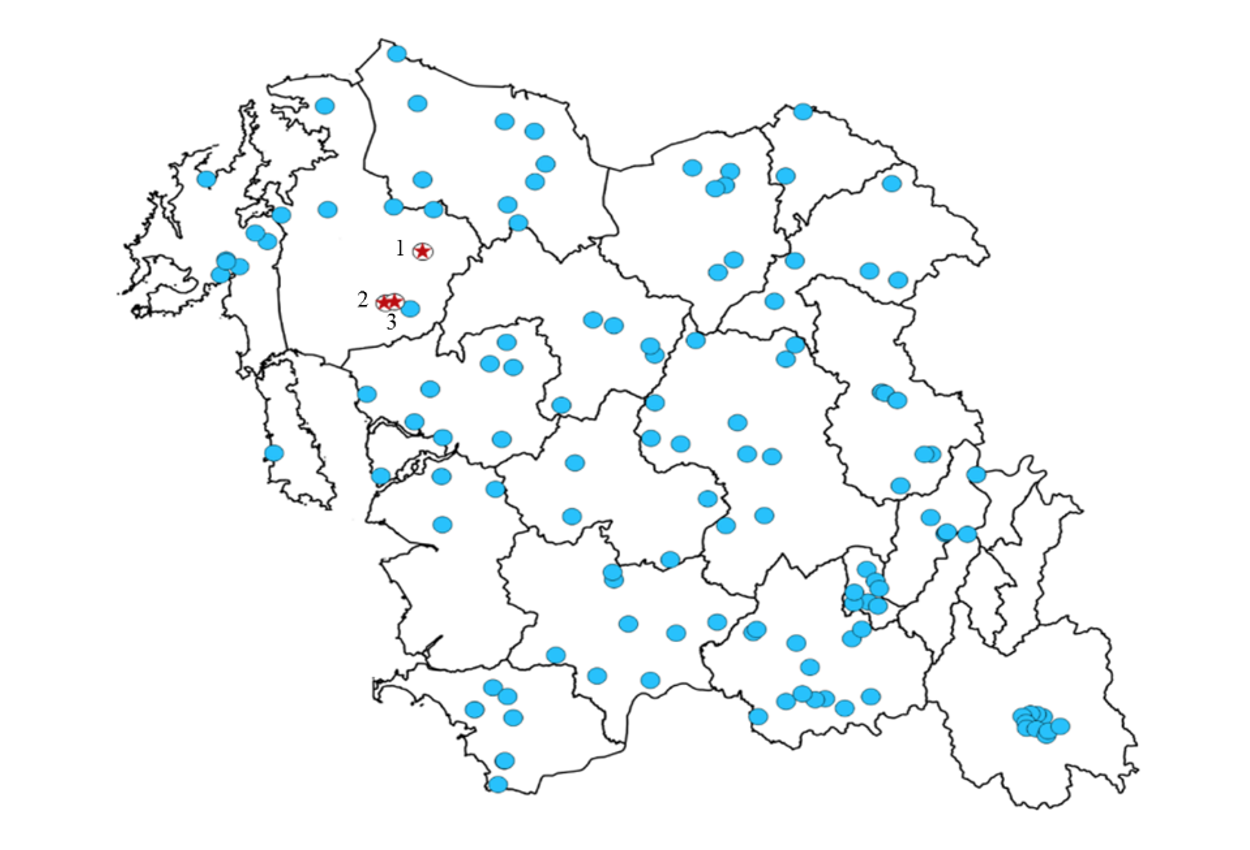Abstract
This study was conducted to investigate the distribution and seed biology of
Figures & Tables

Fig. 1.Map of survey sites in Chungnam province of Korea. The star in a circle symbol in the map refers the place where exists (1) N36°45'56.1'', E126°33'46.7'': Haeun-ro, Unsan-myeon, Sosan; (2) N36°41'32.6'', E126°30'28.3'': 295-27 Sinjeong-ri, Gobuk-myeon, Sosan; (3) N36°41'39.5'', E126°31'17.6'': 864-3 Namjeong-ri, Gobuk-myeon, Sosan;


